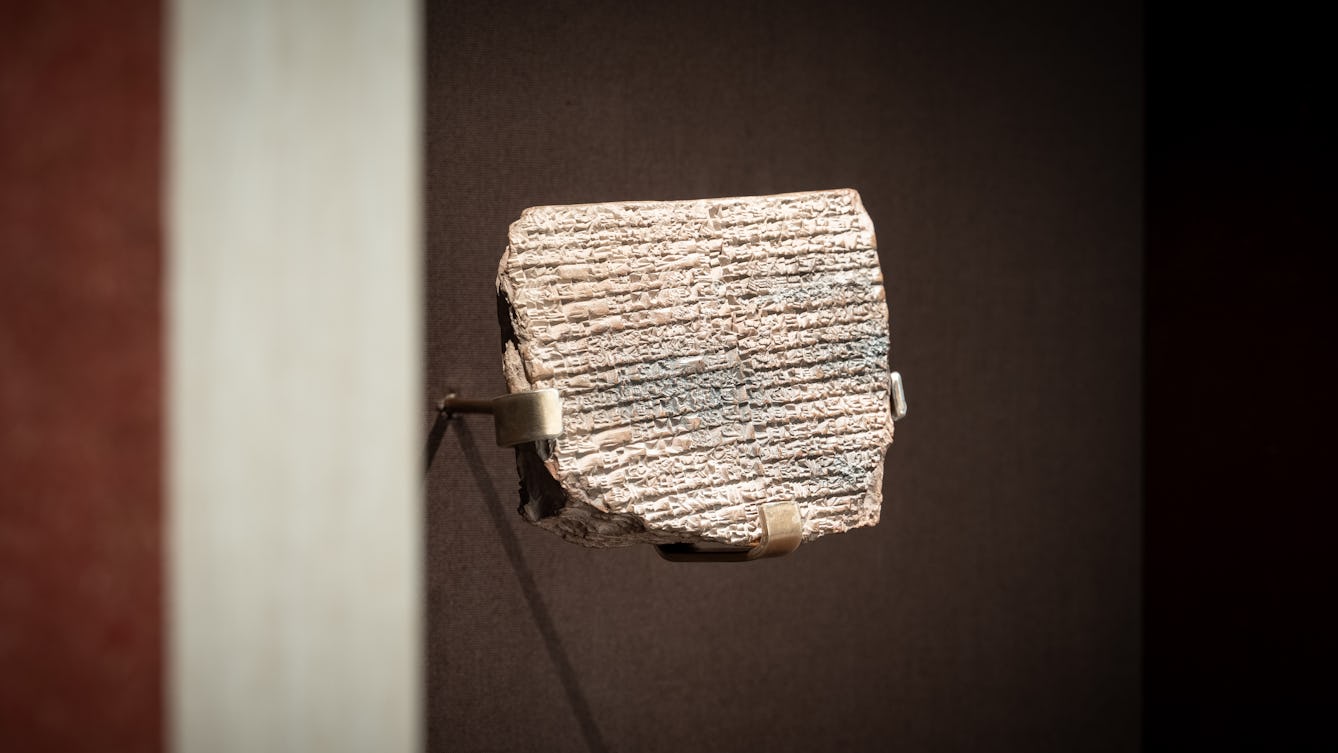Hi – this is Janice Li, the Curator of this exhibition.
On the shelf directly in front of you is a 3D printed replica of an Old Babylonian clay tablet, which you are invited to touch. The original clay tablet, thought to be around 4,000 years old from present day Iraq, is in a recessed display case to the left.
The tablet is roughly rectangular in shape and would fit comfortably in two hands. The bottom section of the clay is chipped and worn with age. Its surface is covered in angular, raised bumps, indentations and markings in Cuneiform script, one of the earliest recorded writing systems, pressed into the clay millennia ago. They form a fragment of the Sumerian poem the ‘Epic of Gilgamesh’, composed around 2000 BCE.
In the story, King Gilgamesh of Uruk is locked in conflict with a rival king, Aga. Aga has threatened to cut off Uruk’s water supply upstream on the Euphrates River if Gilgamesh refuses to enslave his own people to dig wells.
I wanted to begin the exhibition with this object to illustrate how, since the very dawn of human civilisation, our thirst for freshwater has shaped our priorities and relationships with others and the land.
Think about the sensations involved in being thirsty; your mouth and throat are dry, your skin feels a bit tighter around your temples; the beginnings of a headache. Beyond this is a sense of longing – a truly irresistible, urgent need for water. This exhibition brings together a wide range of stories, objects and artworks across time, geography and culture, all tied together by this shared human experience.
The word ‘thirst’ in modern languages such as tešneh تشنه in Persian, tṛ́ṣṇā तृष्णा in Hindi and Durst in German is derived from the Proto-Indo-European root word ters-, meaning ‘dry’. Through this shared root, thirst is connected to land-related concepts like terra, territory and terrain.
By using thirst as a lens we can also extend beyond human experience, to environmental thirst – the needs of the land itself. Divided into five freshwater conditions – aridity, rain, glaciers, surface water and groundwater – the exhibition examines how different people and communities respond to limited freshwater supply in their specific contexts.
There is another story in the wider ‘Epic of Gilgamesh’, albeit not on this particular fragment – the story of the Great Flood. A deluge that covers the Earth, causing destruction and ruin. This universal devastation feels all too imminent today in the context of climate breakdown, water mismanagement, and irreversible environmental loss around the world.
However, the great flood can also herald a new beginning. The water cycle is often used as a metaphor for the cycle of life – from clouds to rain to soil, it has the power to heal and regenerate. We can learn from the way it renews in circular rhythms, and from how people – past and present – have worked together to make sustainable abundance out of scarcity.
This is the end of Stop 2.
